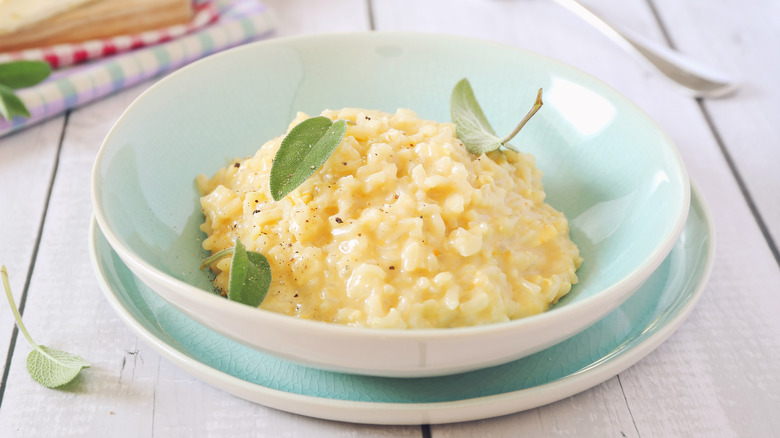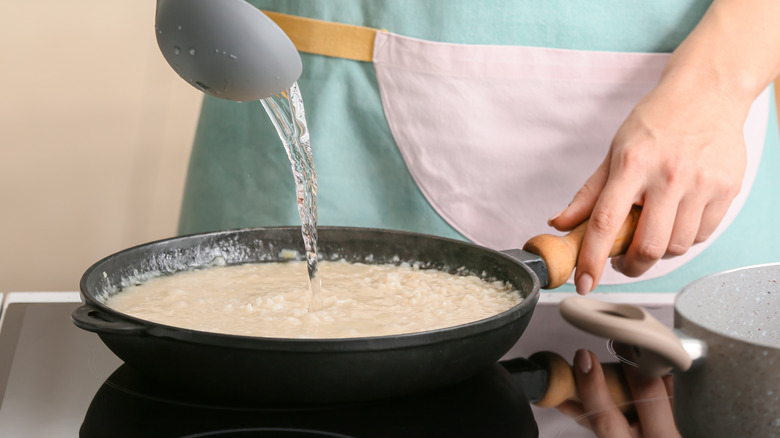How To Reheat Risotto For Day One Texture And Flavor
Go ahead and use that whole package of Arborio rice. Sure, you likely can't eat it all in one go, but making enough risotto for leftovers doesn't have to mean settling for second best. While most foods, tend to be best the day they are made, you don't have to sacrifice texture and taste after the fact when it comes to risotto. Whether you make a plain parmesan risotto or a risotto with add-ins like mushrooms and roasted garlic, with the right reheating mechanisms, you can prolong the lifespan of your go-to risotto, turning one night of effort into a few creamy and delicious meals. After all, making risotto can be a laborious process, so you want to get as many meals out of all that effort as possible.
Just as making risotto is an intensive process, warming risotto is a little more complex than zapping it in the microwave. Instead, pull out your tried-and-true risotto pot or pan, as well as any leftover chicken or vegetable stock you have. With a little effort and time, you can enjoy next-day risotto as though tasting it for the first time.
Reheat risotto in broth to recreate the original recipe
So long dry and uninspired leftovers. Reheating risotto is all about preserving its original taste and texture as risotto is nothing without its creaminess. To maximize your rice's moisture, you'll need to add some more liquid. Yes, it really is that simple; to reheat your risotto, go back to the basics of when you first made it. Remember that vegetable or chicken stock you originally used? Well, you can revive leftover risotto with more of that same broth.
If you have any leftover vegetable or chicken broth you used to originally make your rice, pull it back out of the fridge. If you're out, water will do the trick. You'll need about ¼ cup of liquid for every 1 cup of risotto you have on hand. Bring your liquid to a boil, and add your rice until it's warmed all the way through. If the risotto still doesn't feel like the right texture — namely, it's too thick and congealed — gradually add more liquid until you're satisfied, just as you incorporated liquid into your rice when you first made your risotto.
Again, this process takes longer than popping your rice in the microwave, but if you reheat your risotto with care, you'll preserve its texture, making your leftovers well worth the time and effort.

